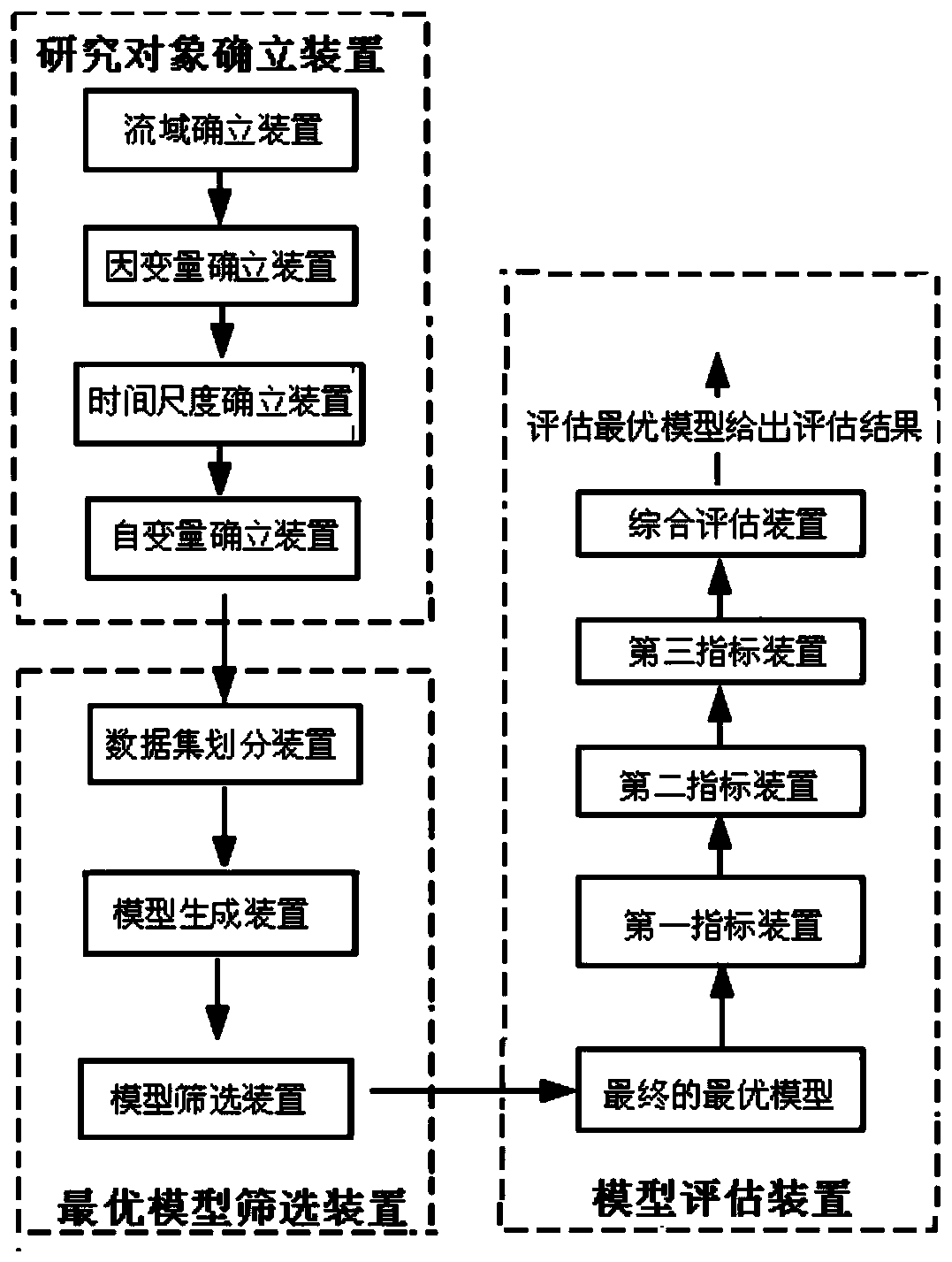Intelligent set evaluation method and system for basin water and sediment research model
A technology for studying models and watersheds, applied in the field of ensemble evaluation, which can solve problems such as insufficient interpretability of input data, model structure errors, and overfitting.
- Summary
- Abstract
- Description
- Claims
- Application Information
AI Technical Summary
Problems solved by technology
Method used
Image
Examples
Embodiment 1-4 and comparative example 1-2
[0096] Example 1-4 and Comparative Example 1-2: The collective evaluation method of Huangfuchuan watershed runoff change research model
[0097] The first step is to establish the research object: a total of 408 samples for the study of runoff changes in the Huangfuchuan Basin from 1982 to 2015. This paper selects three methods: multiple linear regression (MLR), kNN regression (kNNR) and support vector regression (SVR) on the annual and monthly scales. The output variable is selected as runoff, and the input variables are three types of variables including precipitation, evapotranspiration and human activity influence. The time scale is selected as the annual scale and the monthly scale, and the established research objects are shown in Table 1.
[0098] Table 1 Variable selection of relationship between water and sediment changes in Huangfuchuan Basin
[0099]
[0100] The second step is to screen the optimal model: use three different machine learning methods to obtain the optima...
Embodiment 5-8 and comparative example 3-4
[0125] Example 5-8 and Comparative Example 3-4: The collective assessment method of the research model of sediment transport change in Huangfuchuan watershed
[0126] The first step is to establish the research object: to study the change of sediment transport in the Huangfuchuan watershed. Three models of multiple linear regression, kNN regression and support vector regression were selected on the annual and monthly scales.
[0127] The second step is to screen the optimal model: different types of independent variable combinations were selected at the same time, and a total of 12 sets of sediment transport models were trained, covering 12 situations, as shown in Table 6.
[0128] Table 6 Multi-angle ensemble study of sediment transport changes in Huangfuchuan watershed
[0129]
[0130]
[0131] Note: The monthly sediment transport data from 1991 to 1994 are missing.
[0132] Generate models according to the same method as in Examples 1-4, and select an optimal model for each situatio...
PUM
 Login to View More
Login to View More Abstract
Description
Claims
Application Information
 Login to View More
Login to View More - R&D
- Intellectual Property
- Life Sciences
- Materials
- Tech Scout
- Unparalleled Data Quality
- Higher Quality Content
- 60% Fewer Hallucinations
Browse by: Latest US Patents, China's latest patents, Technical Efficacy Thesaurus, Application Domain, Technology Topic, Popular Technical Reports.
© 2025 PatSnap. All rights reserved.Legal|Privacy policy|Modern Slavery Act Transparency Statement|Sitemap|About US| Contact US: help@patsnap.com



